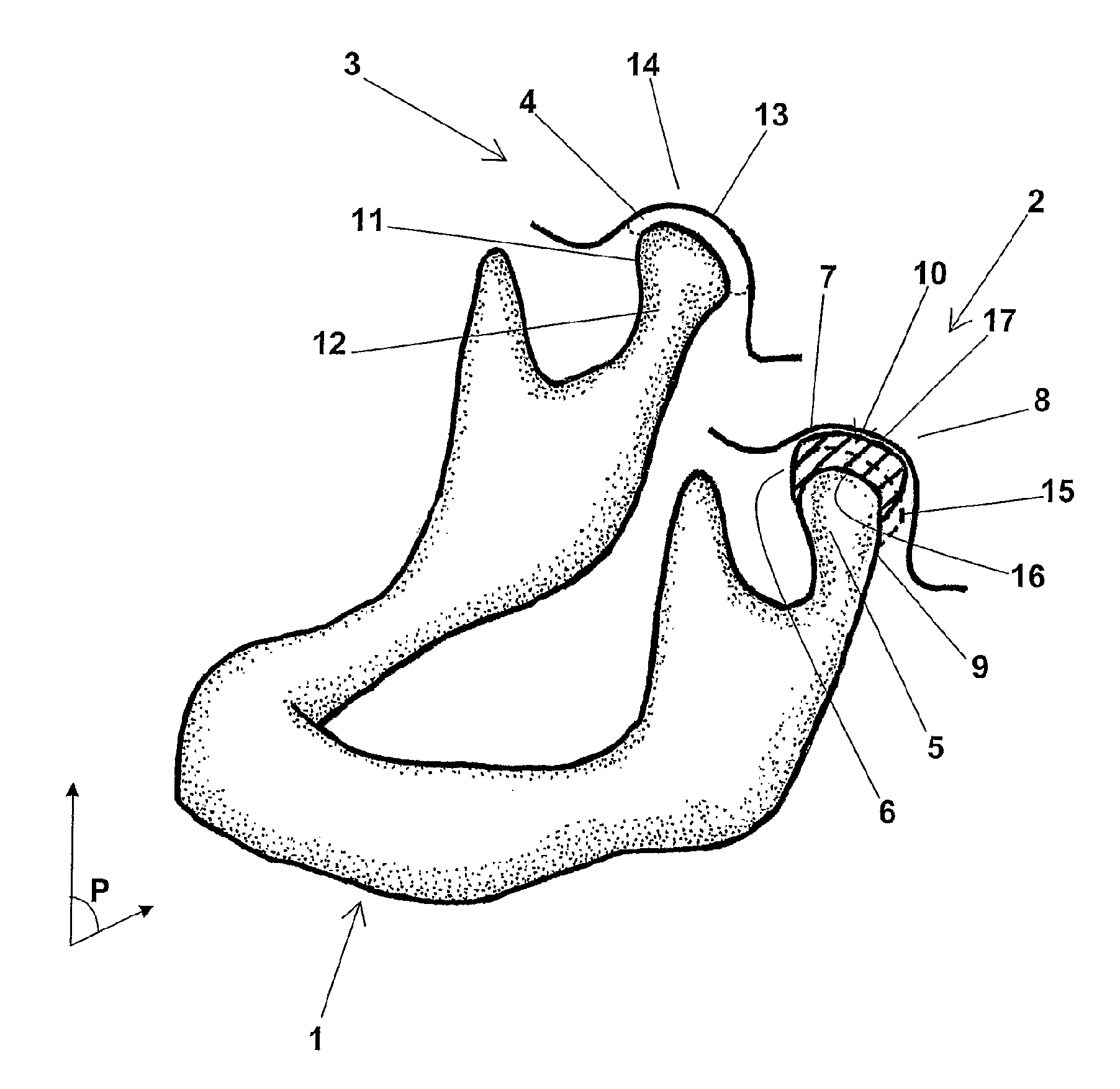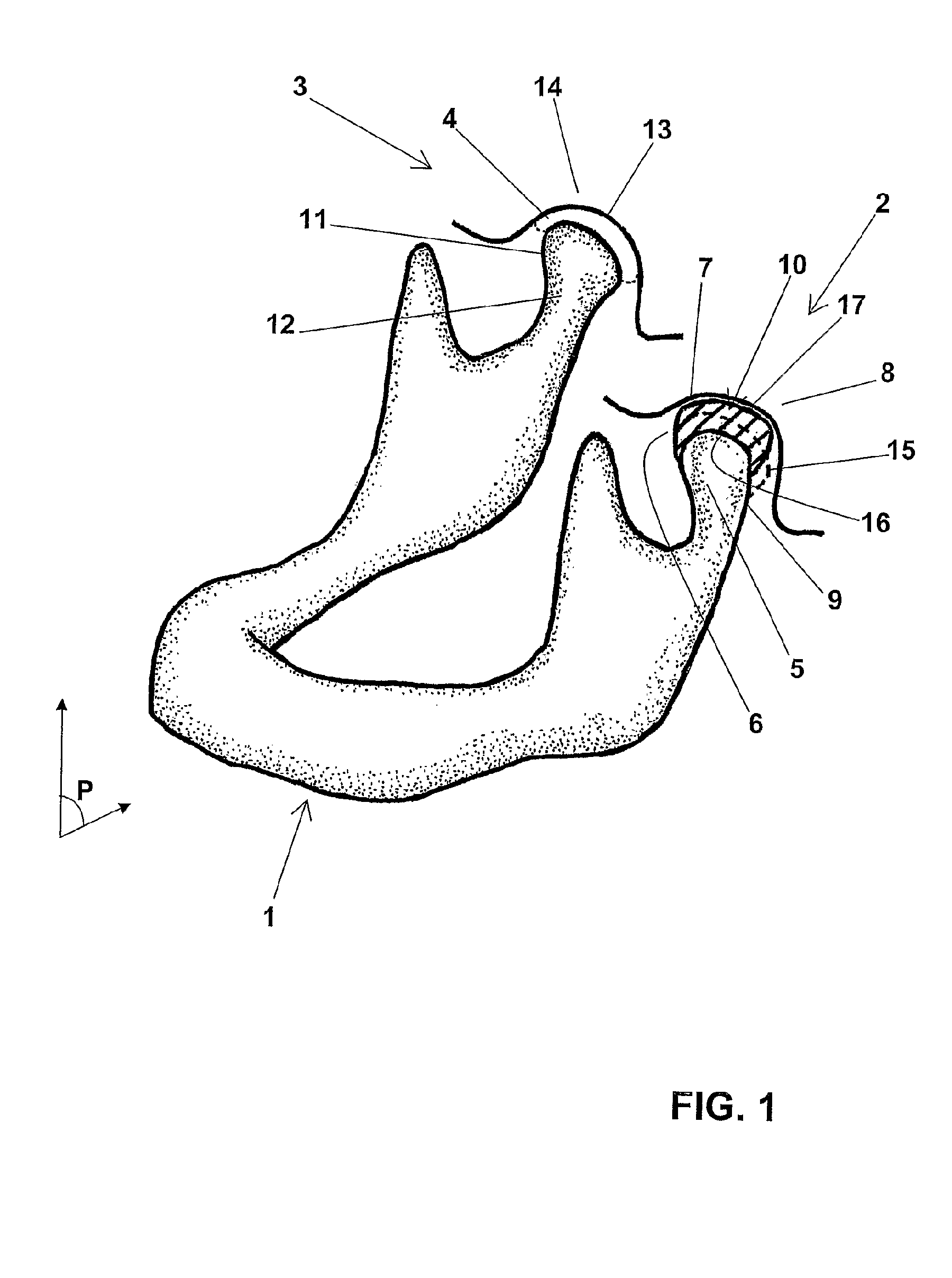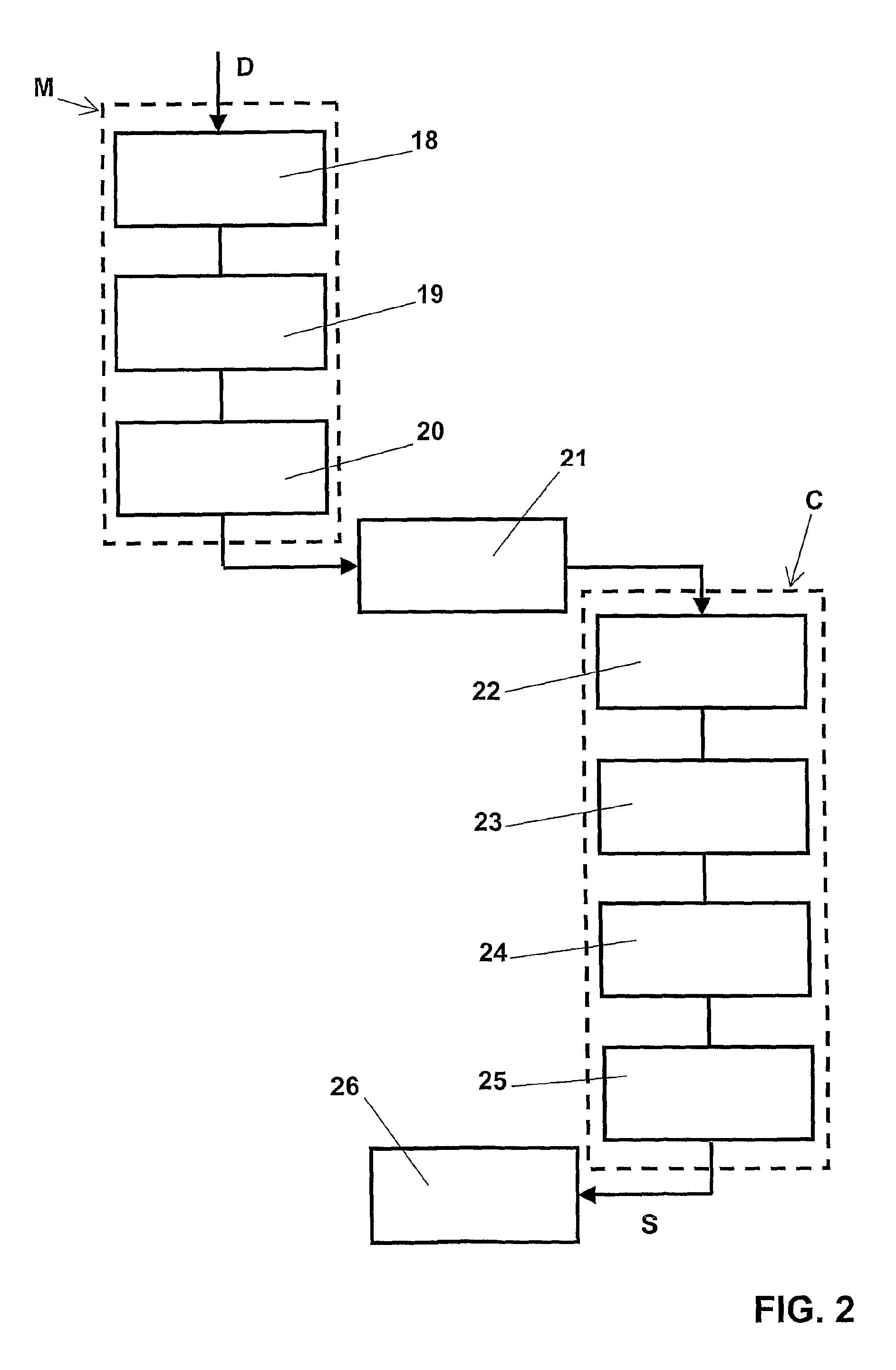Temporomandibular prosthetic implant, and corresponding production method
a technology for temporomandibular joints and prostheses, applied in the field of prosthetic implants, can solve the problems of not being able to attach this type of prosthesis to either the muscles or the ligaments, not being able to achieve the effect of facilitating osteointegration and restoring the bilateral symmetry of the first and second joints
- Summary
- Abstract
- Description
- Claims
- Application Information
AI Technical Summary
Benefits of technology
Problems solved by technology
Method used
Image
Examples
Embodiment Construction
[0036]The references to FIGS. 1 and 2 will serve to explain in detail the features of the prosthetic temporomandibular implant 1 according to the invention, and those of the corresponding production method.
[0037]FIG. 1 shows a simplified transcription of a three-dimensional representation of a human mandible 1 like that generated by a piece of software for processing data produced by a medical imaging device.
[0038]This device is a system capable of providing a highly precise image of the part of the human body in question, for example a tomograph or a magnetic resonance imaging (MRI) device.
[0039]The format of the data output from this system is often of a so-called “proprietary” nature, but more and more frequently tends to adhere to the DICOM (“Digital Imaging and Communication in Medicine”) standard.
[0040]The MIMICS® software from the company Materialise, for example, is capable of processing the data resulting from a cranial examination by any scanner using the DICOM standard, a...
PUM
| Property | Measurement | Unit |
|---|---|---|
| thick | aaaaa | aaaaa |
| shape | aaaaa | aaaaa |
| medical imaging | aaaaa | aaaaa |
Abstract
Description
Claims
Application Information
 Login to View More
Login to View More - R&D
- Intellectual Property
- Life Sciences
- Materials
- Tech Scout
- Unparalleled Data Quality
- Higher Quality Content
- 60% Fewer Hallucinations
Browse by: Latest US Patents, China's latest patents, Technical Efficacy Thesaurus, Application Domain, Technology Topic, Popular Technical Reports.
© 2025 PatSnap. All rights reserved.Legal|Privacy policy|Modern Slavery Act Transparency Statement|Sitemap|About US| Contact US: help@patsnap.com



